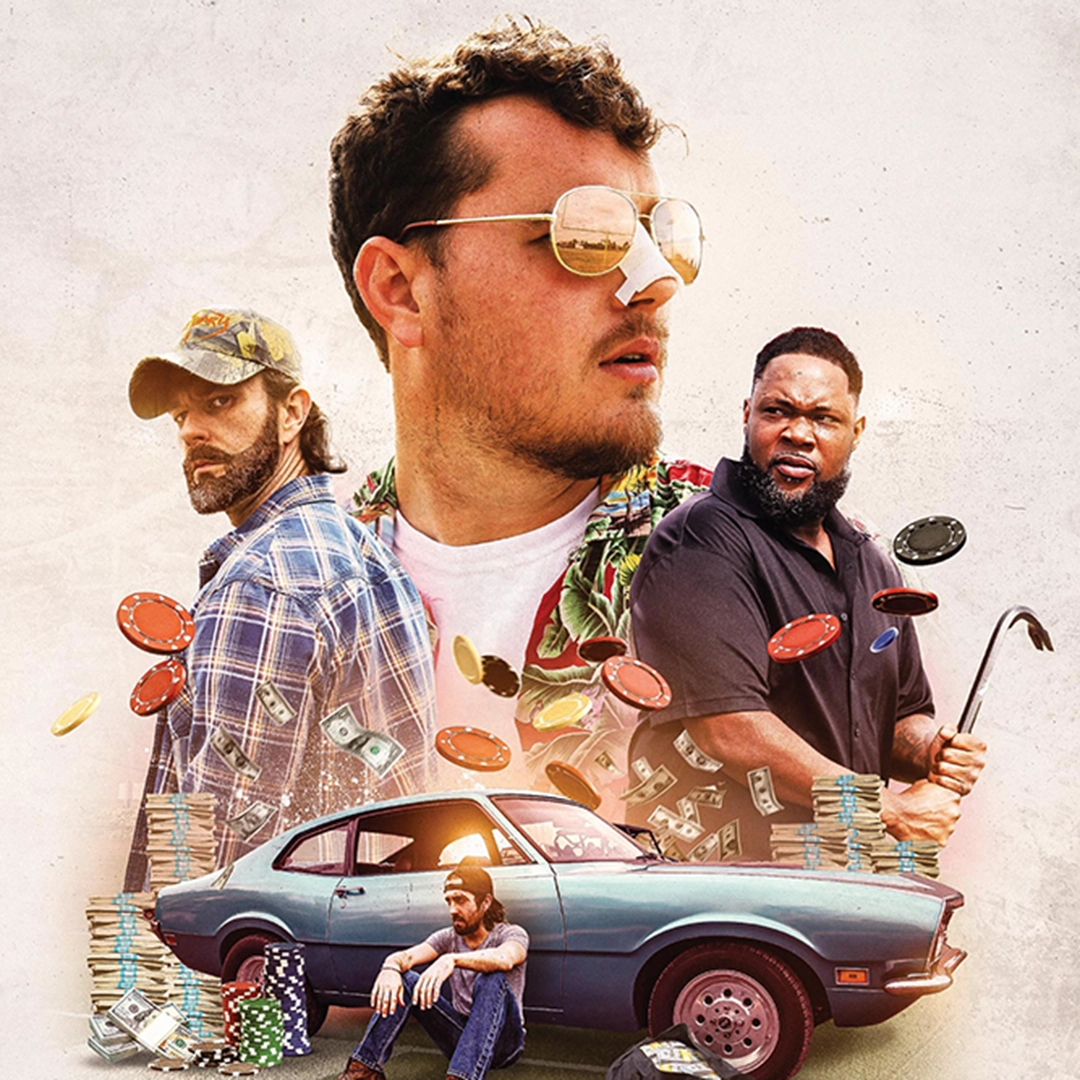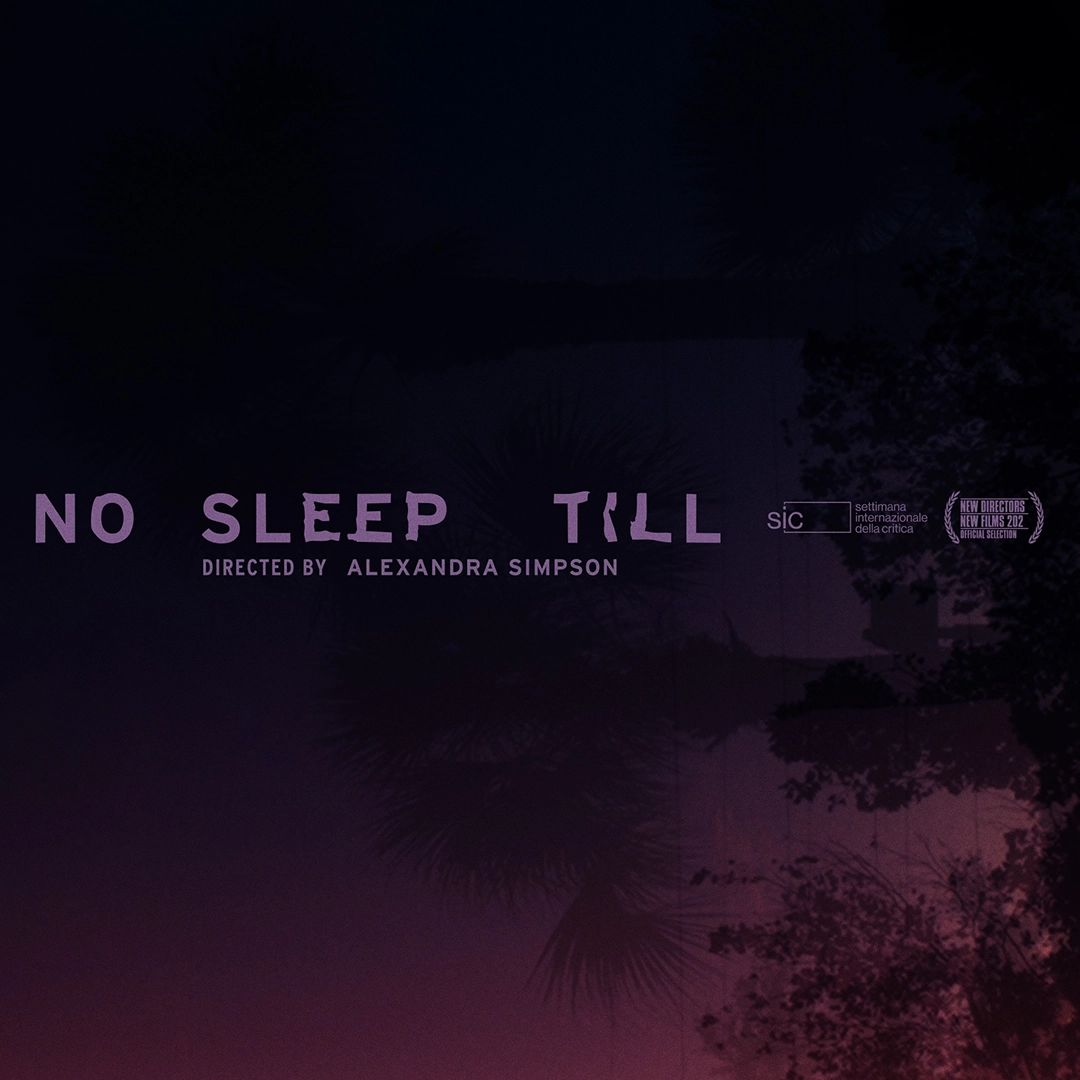by | August 20, 2025
Julian Glander’s New Movie is a Florida Fever Dream
We sat down with Floridian filmmaker Julien Glander to talk orange juice empires, strip clubs, alien goo and his new animated film, “Boys Go to Jupiter.”
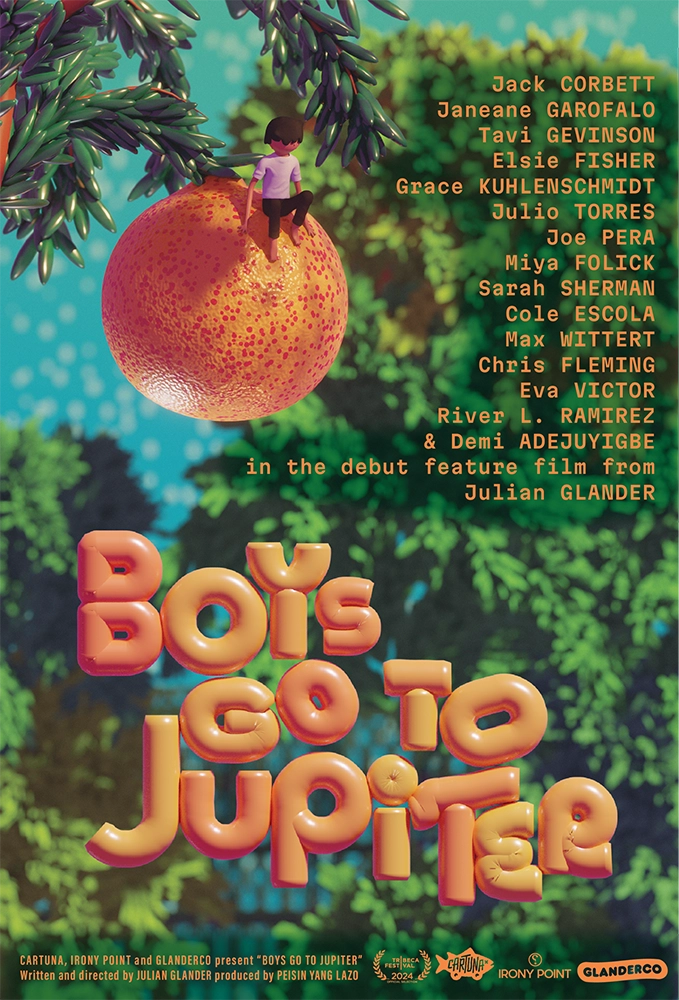
No matter how weird you think Florida is, it’s even weirder in the new animated film “Boys Go to Jupiter.” Filmmaker Julian Glander, who spent his early teens in Odessa, outside of Tampa, imagines the suburban terrain in a near-hallucinogenic palette of vivid neon turquoise, pink, purple and orange. It makes sense for a rangy yarn about a money-hustling kid named Billy 5000 (Jack Corbett), whose efforts to make $5,000 grinding for a DoorDash-like app detour into a mysterious scenario that involves orange juice queenpin Dr. Dolphin (Janeane Garofalo) and Billy’s new best friend, Donut, who happens to be a shapeshifting pile of alien goo freshly landed from outer space. Full of nothing if not surprises—including such set-pieces as The World’s Largest Hot Dog and a science-fictional OJ factory that could belong to a 1960s James Bond villain—the film takes advantage of open-source software (“There wouldn’t be a movie without Blender,” Glander says.) and an impressive voice cast of rising young talents: Chris Fleming and Sarah Sherman from “Saturday Night Live,” newly minted Tony Award-winner Cole Escola, Tavi Gevinson, Eva Victor (whose own film “Sorry, Baby” is making waves). “It was kind of a miracle,” Glander says. “We got really lucky.”
Flamingo hopped on a call with Glander to talk about his formative years in Central Florida, the origins of his animating style and one particular site in Tampa that never left his imagination. “Boys Go to Jupiter” rolls out this month and next in a national theatrical release.
How did your teenage years in Florida inspire the movie?
Julian Glander: The depiction here is very much a hazy, dreamy memory, because when I think about living in Florida, all I really remember is obviously it being really hot. I was a teen scene kid; I never wore shorts. I specifically remember the feeling of bugs crawling on me and wearing really tight jeans, and it being 105 degrees out and the muggy desperation to get inside. Air conditioning was my driving thing (throughout) my whole life there. Those are magical years in anyone’s life, and they become more magical. Even things like living in a boring subdivision, how funny and surreal is it that for miles and miles, every house is the same? Because I grew up in the 2000s, it was a lot of half-constructed houses and a lot of brand new stuff that is now aging in Florida.
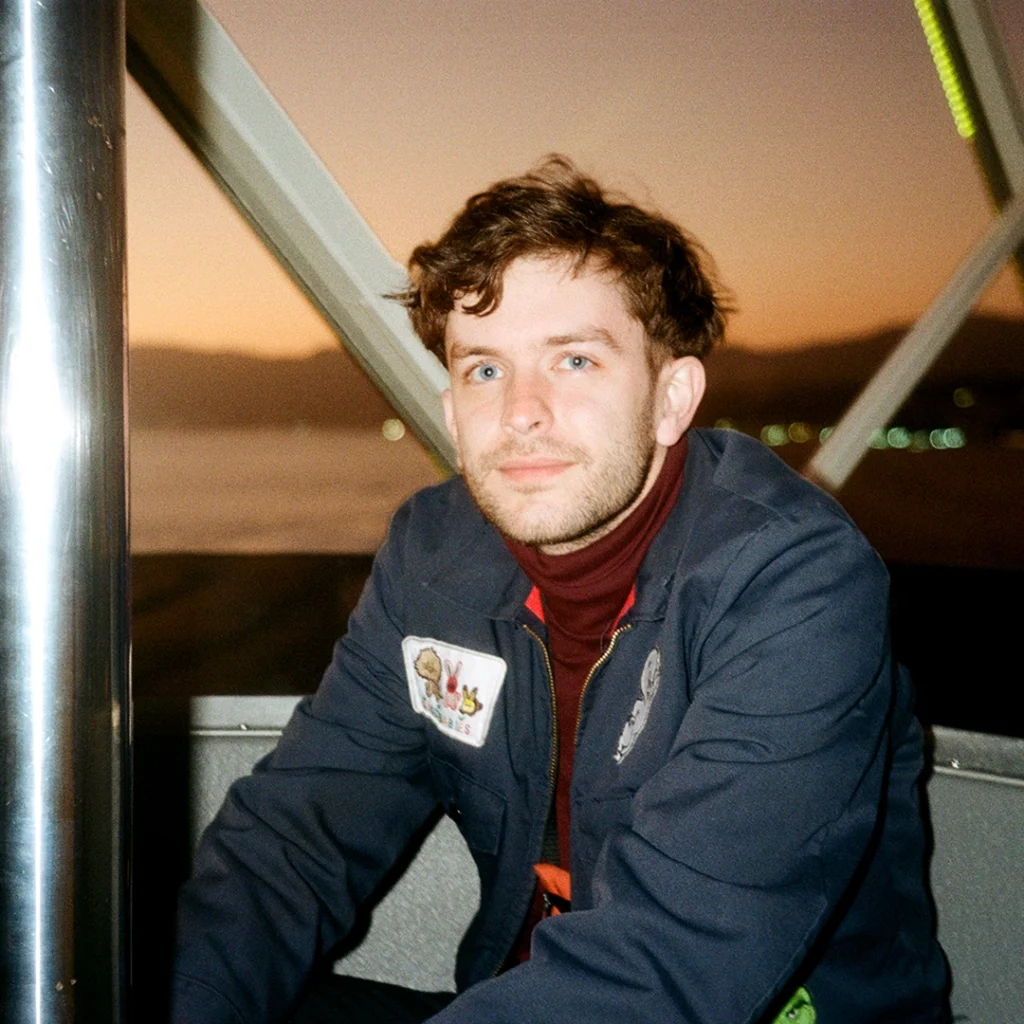
It’s fun to see that landscape elevated cinematically. I always think of “Edward Scissorhands” or “The Truman Show.”
JG: Florida is not well-defined in cinema. What we’ve seen in the last decade is Florida as hell. It’s America’s hell in a lot of ways, right? Because anything goes and it’s hot. I don’t think the average Floridian feels a strong heritage to it, or a sense of shared history. What happens in the movie, and what happens in real Florida, is there’s a constant competition to define what Florida is, because it’s not just the place where people go to retire. It’s not just the Ron-DeSantis Florida that you hear about a lot recently. It’s so fractured and interesting in that way. That’s where the idea of having this delivery boy who kind of floats between all these different people with their own ideologies became the narrative engine of the movie.
What was the seed of it?
JG: The thing that everything started sticking to was this New York Times article I read about Natalie’s Orange Juice company. A woman founded the company, and her daughter’s name is Natalie, and now Natalie has grown up and there’s some growing pains. They’re trying to figure out how to pass the company on to her. I actually did not read the article because it was behind a paywall, but I thought, this is almost like a chamber drama, like “King Lear,” like a “Succession” drama of who takes over the orange juice factory. That was the core story, but then my way into it was this listless delivery driver who took over as I was writing.
And then you added a baby alien?
JG: I had just gotten two baby ducks, and I was raising them from ducklings, and I thought they were so weird. It was also my first time ever having a pet. I had this helpless, weird thing that I couldn’t communicate with, that I had full responsibility over. In the first draft of the script, I was referring to the alien as a duck, just like a duck-like alien. And as time went on he became smoothed out into a doughnut-like alien.
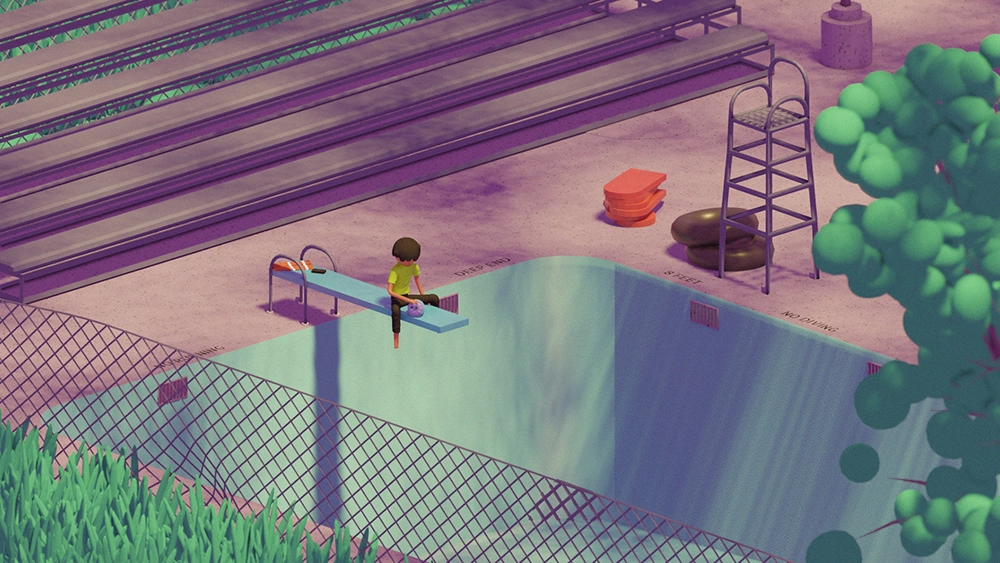
How did you come up with your animation style?
JG: I went to school for creative writing, and when I got out of school, I moved to New York and was working at ad agencies. That’s where I first learned that you could be an animator or an illustrator. I grew up as someone who felt like I didn’t know how to draw, (but) when I started messing around with 3D tools, it made more sense to me as an artist. It felt more like playing The Sims or Minecraft. It felt like playing a game where the result was a brand new image. In the Tumblr era, I started by making GIFs, and the GIFs grew into 15-second shorts, and then short films that went to festivals, and then TV projects, and somehow I just had to keep biting off more than I could chew, and I just had to do 90 minutes of it.
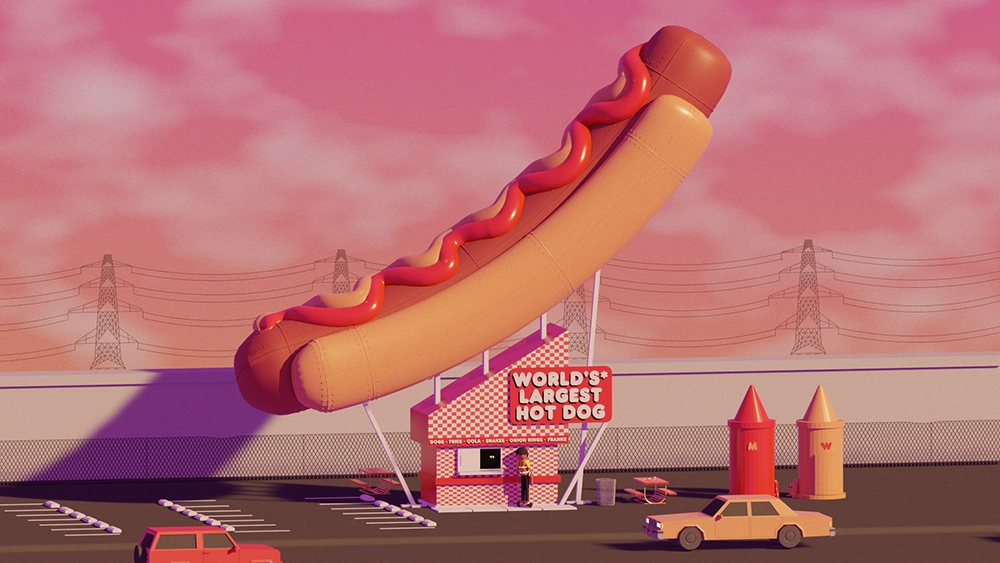
How far back does your interest in animation go?
JG: My earliest memory of animation is (when I was) five or six. I think I had just seen “Roger Rabbit.” I kind of thought cartoons were real. Toontown, it’s depicted very realistically. And so I had this idea that there is a neighborhood that cartoons live in. Like, “Mom, have you ever seen one?” And she said, “No, this is where cartoons come from. People draw them.” She showed me how to make a flip-book. And together, we made flip-books. And her flip-book was a flower blooming, and my first flip-book was a guy going up onto a diving board and then jumping off.
That’s a classic.
JG: I didn’t even realize this until quite recently, but when the movie was at Tribeca, and when we announced it, the poster is Billy 5000 jumping off a diving board in sequence. I was like, “Oh my God.” I can’t believe how long things can take in life. That something that happens to you when you’re five can still be there with you and be such a formative thing 30 years later.

I understand you also took inspiration from a unique architectural icon in Tampa.
2001 Odyssey, which is a strip club outside Tampa. When I was in high school, it had a mythic sort of legend. It went like, “Oh, you know, Johnny turned 18 this weekend, so everyone on the football team went to 2001 and if you pay enough money, they’ll take you up into the spaceship that’s on the top.” It’s a big, shiny aluminum spaceship. It’s actually a prototype, like (a) prefab home from the 1960s. (The site originally was one of the rare Futuro houses conceived by Finnish designer Matti Suuronen). It’s the coolest thing ever. Every (time) I drove by, the light was hitting it differently. That’s Florida in a nutshell. Like, how beautiful is the light hitting the strip club right now?
For more interviews with Florida filmmakers, click here.
About the Author
Steve, a Tallahassee native and Flamingo contributor since 2017, has written about film, music, art and other popular culture for publications including The Wall Street Journal, The Washington Post, the Atlanta-Journal Constitution, GQ, and The Los Angeles Times. He is the artistic director for the Tallahassee Film Festival and writes a monthly film newsletter for Flamingo, Dollar Matinee.


